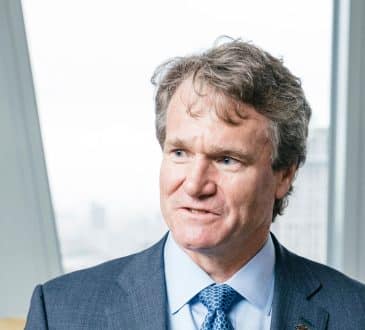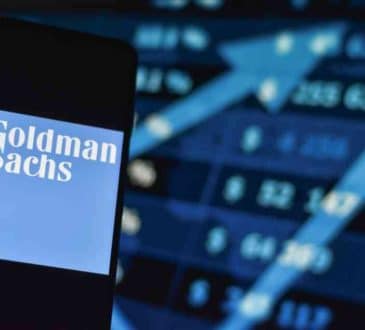The Future of Amazon

This is my last article on Amazon – I’m now working on clean energy. So it’s time to use the past to peer into the future.
Amazon was originally an almost pure version of the Silicon Valley model for startups – go big as fast as possible, grab market share, worry about profits later. That was the formula, and it’s been the creed since Jeff Bezos’s first shareholder letter in 1997. It’s a model used over and over again in tech, now bolstered by huge piles of private capital that insulate growth companies from stock market demands for profits.
But today, the bill for Amazon is due: it is “later.” The promise of profits “later” has come into sharp focus, and the contradiction between the grab for growth and the need for profitability is simply unsustainable. Clearly, it Amazon cannot grow at 25% annually when it is a $400+ billion company. Efforts to do so have just led the company into numerous blind alleys.
In my book Behemoth, Amazon Rising, I explained that there is a huge lake of red ink in Amazon’s accounts, caused by its own retail business. The rest of Amazon is doing just fine – AWS is a money spinner, and so is its marketplace platform and related businesses (advertising, delivery, Prime). But the retail business is far under water precisely because it reflects the drive for growth. In this case, into increasingly unprofitable areas and practices (or even or even outlandish areas – does anyone still believe in Amazon’s high fashion and luxury goods business? That would-be emperor is stark naked.).
So Amazon is finally turning, quite quickly for the supertanker it’s become. It is starting to resemble a fairly standard business in which it pursues profit over growth; it’s in the monetization phase of the big tech company product cycle. We can see this all over Amazon:
- The end of growth in its own retail business
- Squeezing marketplace vendors – on average, Amazon now takes 50% of vendor gross revues, according to Marketplace Pulse
- Squeezing Prime customers, with the price of Prime in the US up from $119 to $179 in a couple of years
- Backing off from international growth
- Cutting services to save money – 2-day delivery for Prime members is now clearly an aspiration, not a promise
- Limiting the previously endless spending on warehouses and infrastructure – Amazon has started to close some warehouses, for the first time.
- Backing out of growth ventures – Amazon One has closed down in health care, where Amazon’s ambitions are now much more limited, and the c losing of some Amazon Go stores means that Amazon may perhaps have started to see that groceries is an extremely tough and very low margin business in which it has no true competitive advantages. Closing the 4-star stores and bookstores reflects a similar recognition that Amazon has no advantages in bricks and mortar businesses.
This turn away from growth and toward profitability is painful in part because Amazon has for a quarter of a century tied its colors so definitively to the mast of growth. Bezos demanded that Amazon be seen as a tech company, not a retailer. It’s famous principles were all tilted toward growth. Bezos – and Amazon – instead that it must always be Day One, the first day of the enormous startup that Amazon became. Today, it’s clear that it is no longer Day One at Amazon, so it’s no surprise that Bezos has jumped ship, moved on to more exciting opportunities.
Let’s be clear. This is not bad news. These changes reflect a very difficult but entirely necessary strategic decision to plug the leaks in the balance sheet before they swamp the ship. And there are other positives as well: the monetization efforts have been broadly successful, although they may be reaching their limits: it’s hard to imagine there is room for more ads on the front page of Amazon’s search results, $179 will test the price sensitivity of Prime customers, and vendors will go elsewhere if the bite becomes unsupportable.
There is other good news as well. As I predicted, Amazon is not a priority for the FCC, and it won’t be bothered by antitrust problems. Especially now that the hyper-aggressive phase is over, Amazon looks much more like one retailer among many, with a different business model to be sure, and with plenty of unpleasantly uncompetitive practices that could draw fire, but it is not a broad threat to competition. The rise of Shopify and other online pathways to the customer may have helped here as well.
So what does the future hold for Amazon?
The decline in its stock price has – unsurprisingly – led many talented people to depart, and it’s a long road back to the previous growth premium for its stock price. Amazon will have to start paying people the going rate in cash, and it’s already beginning to do so.
The next five years at least will be dominated by further efforts to right the ship. Amazon’s own retail business will continue to shrink, certainly as a percentage of the whole business and possibly in real terms. If Amazon can find the will to do so, the best way forward is undoubtedly to plan for the eventual elimination of its retail business altogether.
Amazon will also continue to monetize its existing customer base and vendor base, although those revenue sources may be nearing their limits. And it will back further away from expensive adventures like groceries and retail healthcare. Amazon has specific competitive advantages in some areas, but those sectors don’t qualify.
Further automation will help too. It’s very likely that peak employment at Amazon will come soon, as warehouse workers are replaced – perhaps quite quickly – by robots and automation. Perhaps autonomous vehicles will finally arrive, at least enough from Amazon to use AVs for some delivery routes. Further incremental operational improvements, like its new automated platform for long distance trucking, will probably help as well.
There may be further cuts or rationalizations as well. Perhaps using entertainment to sell shoes, as Bezos famously boasted, isn’t actually the best way to sell shoes. Maybe Amazon Video will have to become a better standalone business, or be dropped altogether. That could be true for other Amazon businesses.
Finally, Amazon will almost inevitably spin out AWS at some point. The period when Amazon needed AWS in-house and AWS needed Amazon as its best customer is now long gone. AWS is really the golden goose in the Amazon portfolio, and it likely accounts for a considerable share of Amazon’s current stock valuation – perhaps as much as half. Whether it’s Andy Jassy or his successor, eventually Amazon will seek to monetize that too, aiming to create value by listing AWS separately and then selling parts (it will likely be too valuable for anyone to swallow the whole thing).
A conclusion?
It’s been an incredible ride, but the Age of Amazon the unstoppable growth engine is already over. And as the transition emerges into clearer focus, we can see that the era of Amazon the profitable middleman is struggling to be born. Focusing on its third party platform will in the end allow Amazon to shed its most unprofitable segments, and it will also help Amazon to avoid many of the current difficulties caused by conflicts of interest between its own retail operations and the vendor platform. But that clarify, and the tough choices still to be made, mean that those sun-pit pastures are still well over the horizon.
Written by Robin Gaster Ph.D.
Amazon CEO Andy Jassy has been ranked No. 3 in a list of the world’s best CEOs for 2023; meanwhile, Amazon.com, Inc ranked No. 2 in the CEOWORLD magazine’s ranking of the world’s most influential and innovative companies.
Have you read?
Countries With The Most Billionaires, 2023.
How to stop doubting yourself by Téa Angelos.
Why the change in the workplace is the biggest risk for psychological injuries by Kerry Howard.
The Art of Embracing Mistakes In Business to Unlock Unprecedented Growth by Dr. Erik Reis.
What Technologies Will Shape the Travel Industry For the Better by Ilya Rouss.








